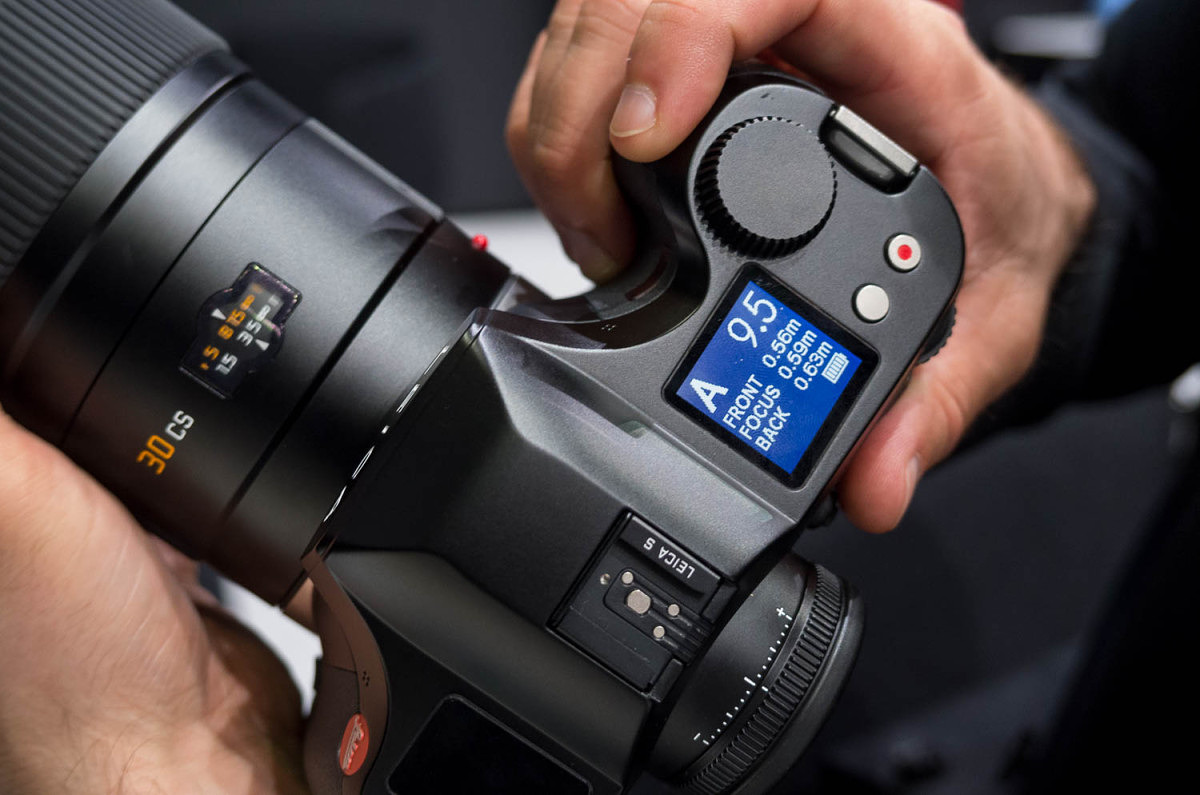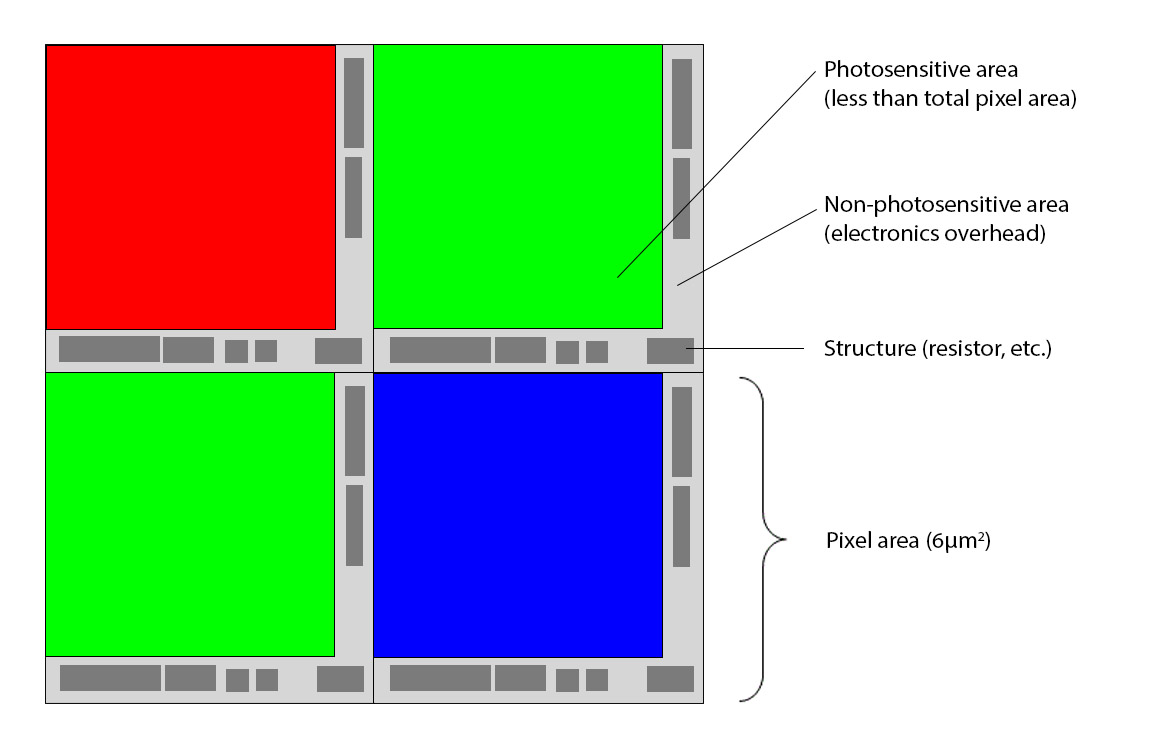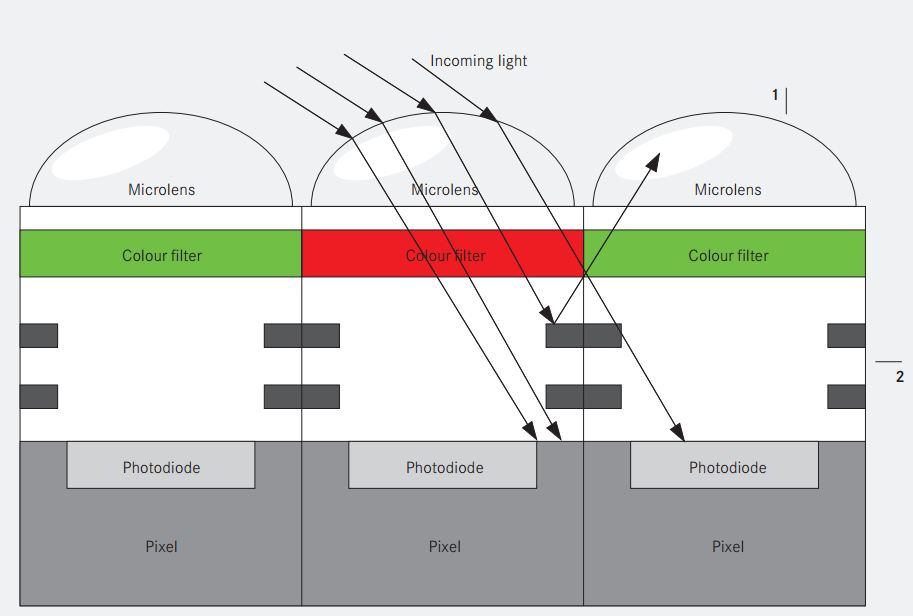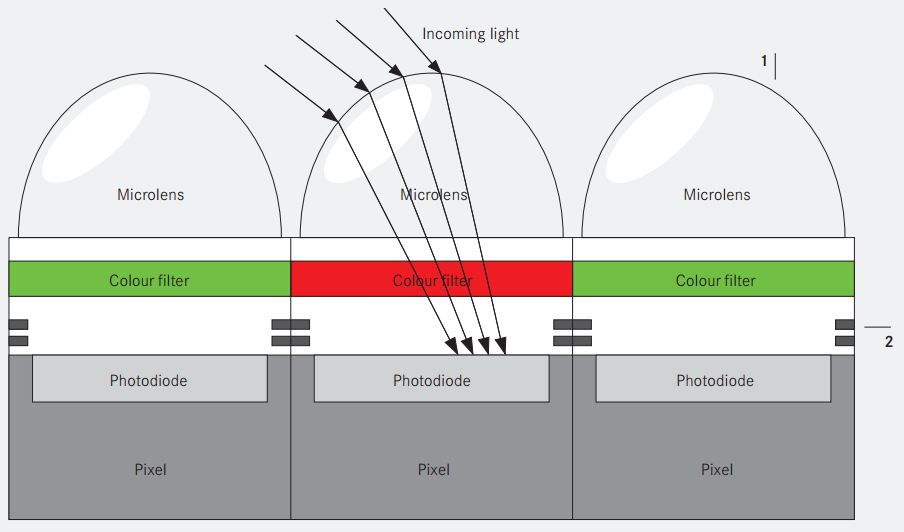RVB started the topic S & 30-90mm in the forum Images to Share 11 years ago
Took this in the Staal straat in Amsterdam a few weeks ago.. using a RRS tripod…
RVB commented on the post, Why Leica is staying at 37.5MP for the S (Typ 007) 11 years, 1 month ago
In reply to: David Farkas wrote a new post, Why Leica is staying at 37.5MP for the S (Typ 007) Since Photokina, I’ve read some comments online expressing disappointment in Leica’s decision to use the same 37.5MP resolution of the current S (Typ 006) in the upcoming S (Typ 007). I’m not surprised. Indeed, as a long time S-System user myself, I can’t say that my initial reaction wasn’t similar. I too wondered why there was no resolution bump. But, unlike the average S-System user, I have a certain advantage and a somewhat unique perspective that most don’t. I’ve had a few hours of one-on-one time during Photokina with key individuals at Leica responsible for developing the product. And believe me, I am grateful for the continuing opportunities that my close relationship with Leica has allowed for over the years. Besides speaking with the head of professional imaging Stephan Schulz and S 007 product manager Toni Felsner at some length in Cologne, I also had a very informative chat with Dr. Volker Zimmer, the head of R&D at Leica. In each of my conversations, I pretty much led off with, “So, why only 37.5?” And, to the casual observer, the reactions and responses to such a direct question that I received might be surprising. Instead of the defensiveness that one might expect, I was greeted with knowing smiles and articulate reasons surrounding the decision. Before even delving into Leica’s strategy, we, as users, have to really ask if this resolution is holding us back. Some might say, “Yes, absolutely. More is always better.” And perhaps others would reason, “No, the resolution is fine, but I’d really like live view and higher ISO.” As for myself, I’ve been shooting with the S2 and then S 006 since before the S2 was even in production. I have made eye-poppingly good 30x40 inch prints myself and have seen beautiful fine art prints 5 x 7 feet printed from single S2 files hanging in our gallery at Leica Store Miami from photographer EJ Camp.Stephan’s take on the matter was that he doesn’t think that users’ real issue is about actually needing more pixels. The difference between 40 and 50 MP is roughly a 10-15% increase in linear resolution, hardly earth shattering. He feels strongly that for there to be a noticeable increase in image quality, the jump would have to be more significant, say from 40 to 60 or possibly even to 70 MP. He believes the underlying concern is that users of a system want to feel theirs is the most advanced, the most future-proof. By staying at 37.5 MP while the competition is all going to 50 MP, Stephan thinks that the concern of some Leica S users is that somehow their camera is outclassed, or worse, outdated. I thought for a moment about this then ran a quick list of features in my head, innovations and advantages of the S 007 vs. the competition.I thought in general about all S camera bodies, including the current S 006:
Before even delving into Leica’s strategy, we, as users, have to really ask if this resolution is holding us back. Some might say, “Yes, absolutely. More is always better.” And perhaps others would reason, “No, the resolution is fine, but I’d really like live view and higher ISO.” As for myself, I’ve been shooting with the S2 and then S 006 since before the S2 was even in production. I have made eye-poppingly good 30x40 inch prints myself and have seen beautiful fine art prints 5 x 7 feet printed from single S2 files hanging in our gallery at Leica Store Miami from photographer EJ Camp.Stephan’s take on the matter was that he doesn’t think that users’ real issue is about actually needing more pixels. The difference between 40 and 50 MP is roughly a 10-15% increase in linear resolution, hardly earth shattering. He feels strongly that for there to be a noticeable increase in image quality, the jump would have to be more significant, say from 40 to 60 or possibly even to 70 MP. He believes the underlying concern is that users of a system want to feel theirs is the most advanced, the most future-proof. By staying at 37.5 MP while the competition is all going to 50 MP, Stephan thinks that the concern of some Leica S users is that somehow their camera is outclassed, or worse, outdated. I thought for a moment about this then ran a quick list of features in my head, innovations and advantages of the S 007 vs. the competition.I thought in general about all S camera bodies, including the current S 006:- Smallest, lightest, most ergonomic body
- Completely weather and dust sealed on body and lenses
- Brightest, most color neutral viewfinder
- Virtual horizon display in viewfinder
- Dual shutter system (even with Hasselblad HC/HCD lenses)
- Least mirror vibration
- Best lenses (no one seems to argue this one)
- Longest battery life with shot counts measured in thousands
- Optional grip to double battery life
- Fastest AF system (with latest firmware)
- Best focus tracking for moving subjects (with latest firmware)
- Only system with built-in GPS for geotagging and auto time/date/time zone setting
- Most integrated system with such features as aperture shift compensation in AF
- Only system designed 100% from the ground-up as a complete digital imaging chain
- Ability to use Hasselblad HC/HCD lenses with full AF, aperture and shutter control via adapter
- Ability to use Contax lenses with full AF and aperture control via adapter
- Manual adapters for Mamiya 645, Hasselblad V and Pentax 67
- Fastest frame rate / fastest sustained frame rate (3.5 fps)
- Fastest shot-to-shot time
- What promises to be best high ISO performance in MFD
- Most advanced sensor design (I’ll get to this one in a minute)
- Magnified live view anywhere in image
- Focus peaking on screen
- Only system with live view contrast detect AF anywhere in the image
- Only system with spot metering anywhere in image during live view
- 60 fps refresh rate on live view for seamless output
- Full Wi-Fi control from iPad with 60 fps streaming live view, capture and image review
- Backup mode for dual card recording and recording to card while tethered
- Live readout for DOF range
- Only MFD system with 4K video
- Only MFD system with built-in timecode generator and ability to receive external timecode via adapter
- Full sensor width HD recording
- Clean FullHD HDMI out with simultaneous recording to card
- 4:2:2 video encoding
Dr. Zimmer estimates that the sensor in the S will have a SNR of around 79 dB, which will probably translate into somewhere between 13 and 14 stops of usable DR. The second goal was to achieve the thinnest CMOS sensor ever developed so that the pixel wells were as shallow as they could be. There are multiple layers to a sensor and by making each one of these slimmer the cumulative result is significant. Why is this important? Well, when light enters a shallower pixel well it is less likely to bounce off the edges on the way down to the photodiode.Some of the technology that went into the sensor came from CMOSIS’s experience in making 1.75 micron mobile phone camera chips and using extremely fine structures to maximize the already small photosensitive areas on those tiny sensors. One such tactic was utilizing copper to construct the conductive pathways (wires) in the sensor. Most often, aluminum is the chosen material, as the process for using copper is more complex. But, because copper has a much lower electrical resistance, conducting layers with half the thickness could be used. And to minimize thickness, instead of having four metal layers for the conductors typically employed on CMOS sensors, only two were necessary on the MAX CMOS chip.Leica also designed an optical microlens structure unlike any used previously. Leave it to an optics-driven company to rethink the classic flat-raindrop structure used for so many years. The Leica design is more of an elongated cone. Light entering perpendicularly passes straight through, and light coming in at a high angle of incidence gets caught by the taller lens and directs it down. The result is that there is no sensor vignetting, no color shifts and no loss of sharpness in the corners. It’s easy to put this theory to the test. Take a Leica 18mm Super Elmar-M ASPH lens. Put it on the M 240 and take a shot. Then, mount the same lens on a Sony A7r. Yeah…. Oh and just to see that the advantage isn’t only at extremes, try a 35mm Summilux ASPH next. The Sony sensor in the A7r just isn’t adept at handling non-retrofocus lenses, with non-telecentric designs.The result of all these efforts is that the S 007 should prove to be the most advanced and capable medium format digital system on the market. Cutting edge, from optics to camera body to sensor architecture, the S will be far from outdated. So, what about those needing more pixels? Here’s the math: going from 40 to 50 MP would only yield an additional 2.6 linear inches of print resolution at 300 DPI. That’s it. So, as a photographer, I ask myself whether I’d rather have that long list of advantages and features that can expand my photographic possibilities, or whether I want to print two inches wider. I think the answer is clear, at least for me, and I do hope that others can look beyond mere megapixels to see what the S 007 will have to offer. View
Diagram of the surface of a sensor. If structures can be made smaller, the non-photosensitive areas can be minimized to allow for more surface area dedicated to light gathering.
Good article David,the 007 is a very nice camera and I'm planning to buy one, However I would like to see a Phase/Blad style solution of offering different sensors with a very high MP sensor option of around 70-80mp,
Raising Resolution is not just bragging rights,it produces better files in the right environment,less aliasing /Moire on finer…[Read more]
RVB replied to the topic New S (007) in the forum Leica S 11 years, 2 months ago
Josh,we now have two S bodies in the product line,perhaps adding a high res option at some point would be a good idea,the 6um pixel has its benefits in speed and low light and the S files are nice but I also like the look of the files from the D810 and IQ280 (I have access to both) and they're both using smaller pixel pitches of 4.88um and 5.2um…[Read more]
RVB replied to the topic New S (007) in the forum Leica S 11 years, 2 months ago
Good article David,while I'm a little disappointed in the resolution and am unsure of the file quality I still think that the camera is very interesting.
Do you think that they can extend the max shutter speed via firmware…125seconds from CMOS is too short,the H5D-50C can do around 30mins with no Dark frame subtraction..
Rob
rvb likes a reply on New S (007) 11 years, 2 months ago
RVB replied to the topic Leica S (006) Firmware Update Ver 2.4.0.0 in the forum Leica S 11 years, 2 months ago
Thanks for this… it was very helpful!
Rob
rvb likes a reply on Leica S (006) Firmware Update Ver 2.4.0.0 11 years, 2 months ago
RVB replied to the topic Leica S (006) Firmware Update Ver 2.4.0.0 in the forum Leica S 11 years, 2 months ago
I installed this and the cam is telling me that there are Lens updates available when I switch it on,but the lens firmware on the owners area is not new..
120cs is LEICA APO-MACRO-SUMMARIT-S 1:2.5/120 CS 132.35.7.0
I have this installed and still its telling me to update ..
Rob
RVB started the topic New S (007) in the forum Leica S 11 years, 2 months ago
Looks good in many ways but lack of long exposure and zero jump in Resolution is disappointing,I will buy the new Summicron instead and Keep my 006,Still its nice to see USB 3 and wifi.
Looking forward to seeing how these files compare to the CCD file..
Rob
RVB replied to the topic Leica 120 mm CS: AF not working in the forum S Lenses 11 years, 5 months ago
On the subject of S glass,If there is another accessory I would like to see its a 2nd S rolling case that could take the S24mm,the Zoom and the new 100mm and extra batteries and CF cards…
i have the current case and its great but only holds 5 lenses and even if you wanted to leave a couple behind you still couldnt fit the Zoom or 24mm in..
RVB replied to the topic Leica 120 mm CS: AF not working in the forum S Lenses 11 years, 5 months ago
peterv;8506 wrote: Impressive test results, Rob! I would not have expected the difference between these two lenses to be that obvious.
Peter I have a few HC lenses,I will probably sell them,the S lenses are a step up,no doubt about that.. The blad lenses work pretty well when stepped down to be fair,but DAC is more important for HC IQ…[Read more]
RVB replied to the topic Easter Egg in Lightroom – 100mm Summicron in the forum S Lenses 11 years, 5 months ago
This is a great addition to the line up,hopefully it has fast focusing,at least as fast as the 70 and 180,there would certainly be a CS version i the works..
Only glass missing now is a wide TS and something longer than 180..
Rob
RVB replied to the topic Leica 120 mm CS: AF not working in the forum S Lenses 11 years, 5 months ago
RVB replied to the topic Next S sensor.. CCD or CMOS?? in the forum Leica S 11 years, 5 months ago
Arif;8487 wrote: I agree, if it is significantly more expensive, then a no-go for me. Am very happy with the S2 and the 30-90 but was hoping for a clean 3200 ISO to make the move.
Arif,If the M240 sensor is a reference for the new sensor then I think ISO is going to be pretty good,I don't own an M but of the files I have seen it has…[Read more]
RVB replied to the topic Next S sensor.. CCD or CMOS?? in the forum Leica S 11 years, 5 months ago
PebblePlace;8485 wrote: Well, that stinks. With Ricoh putting the 645Z on the street for $8495, it's kind of difficult to believe that the new CMOS S is costing more to make than the Type 006. I realize that Leica may be opting for a CMOSIS sensor (or someone else's) instead of Sony. But geesh…
I was also hoping the price would remain…[Read more]
RVB replied to the topic Next S sensor.. CCD or CMOS?? in the forum Leica S 11 years, 5 months ago
Just had a chat with a Leica dealer in Germany.. they said that the current S will remain in the line up and that the CMOS will be significantly more expensive than the current camera.. Start Saving guys… 😉
Rob
RVB replied to the topic Next S sensor.. CCD or CMOS?? in the forum Leica S 11 years, 5 months ago
peterv;8431 wrote: Thanks for that link Rob, interesting stuff. I passed it along to a friend of mine who's going to shoot his new film in 3D, next month. He'll be shooting on Reds, I guess IMAX 3D is going to be big budget Hollywood movies only.
Anyway, on a new Leica S, it's interesting that there are absolutely no rumours yet. With…
RVB replied to the topic Next S sensor.. CCD or CMOS?? in the forum Leica S 11 years, 5 months ago
peterv;5826 wrote: Exactly, there seems to be a trend towards larger sensors in video/digital cinema:
… Panavision unveiled a prototype for a digital camera that will have a sensor equivalent to 70mm…
http://nofilmschool.com/2013/01/red-epic-dragon-arri-alexa-sony-f55-f65-panavision-70mm-camera/
The diagonal of ‘regular' 65 mm…
RVB replied to the topic Leica Vario-Elmar-S 30-90 mm in the forum S Lenses 11 years, 6 months ago
Some of you guys might find this interesting,it's a review of the 30-90 by Niel Morley ..
http://nielmorley.blogspot.com/2013/09/leica-vario-elmar-s-3090-mm-f3556-asph.html
RVB replied to the topic Macbook Pro Retina display in the forum Computers and Technology 11 years, 7 months ago
Jack MacD;6180 wrote: David or Roger,
Any update on this retina issue? We are now over a year since the last post.I am about to update my computer ( 3 years old ) and was
leaning toward a rMBP to drive a 4K display.
Seems smarter than a Mac Pro which for photos seems like overkill.Thoughts from others are welcome.
Jack,I…[Read more]
- Load More




